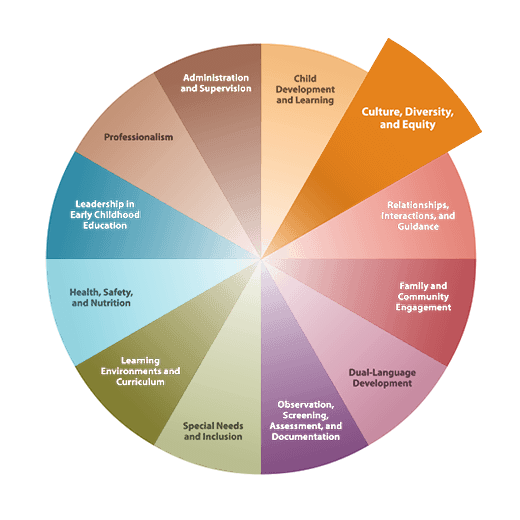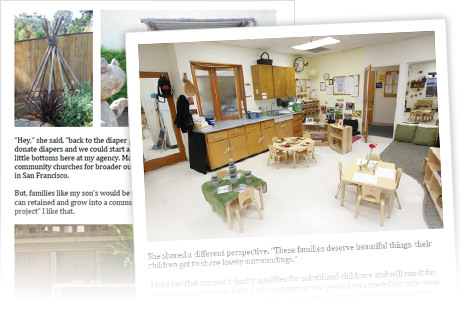This competency area underscores the concept that there is no knowledge base, skill set, teaching practice, or curriculum for early development and learning that can be applied for all children. Early development and learning must be viewed within a cultural context and occurs through social contexts, as in families and communities, using language and everyday experiences (California Department of Education 2009a). Cultural perspectives of children, families, staff, and colleagues vary widely on issues such as differences in individual children’s learning, strengths, and abilities; gender identity and gender-specific roles; family composition and member roles; generational experiences and perspectives; communication styles; regulation and discipline; coordination and physical development; and acquisition and synthesis of information (California Department of Education 2009b). Early educators who learn to think from a multicultural perspective are better able to provide opportunities that reflect each child's culture and family experiences (Banks 2006 and 2008). Learning environments are enriched when children’s individual characteristics, values, cultures, and temperaments — as well as diversity among children, families, and peers — are respected and valued in concrete ways.
Download the California ECE Competencies
This document requires the Adobe Acrobat Reader. Download the plug-in.

Framing questions identify some of the major themes in this competency. They provide you with a starting point. As you explore this competency, add your own framing questions for issues you want to further examine.
Keep these dispositions in mind as you explore the Framing Questions. If you mindfully adopt these dispositions, you will realize the Desired Outcomes for Practitioners and for Children.
The CompSAT Keys to Reflection and Inquiry offer you a protocol to use in whatever setting you work as an early childhood educator. Learn how you can integrate the six Keys into your work. Select one of the Keys below to practice reflecting with questions related to the competency area of Culture, Diversity, and Equity.

Choose from one of the Keys below to view additional information related to this Competency!

Chronicling your observations, wonderings, and growth in a topic area can take many forms. In this portfolio segment, the practitioner prepared an article for publication. She documented her experiences, thoughts, and discussions about poverty and early care and education programs, describing her personal experiences and questions, as well as the experiences of families she knows. She wanted to share this particular segment with a broad audience, so she formatted it as an article to be submitted for publication to a professional journal.
